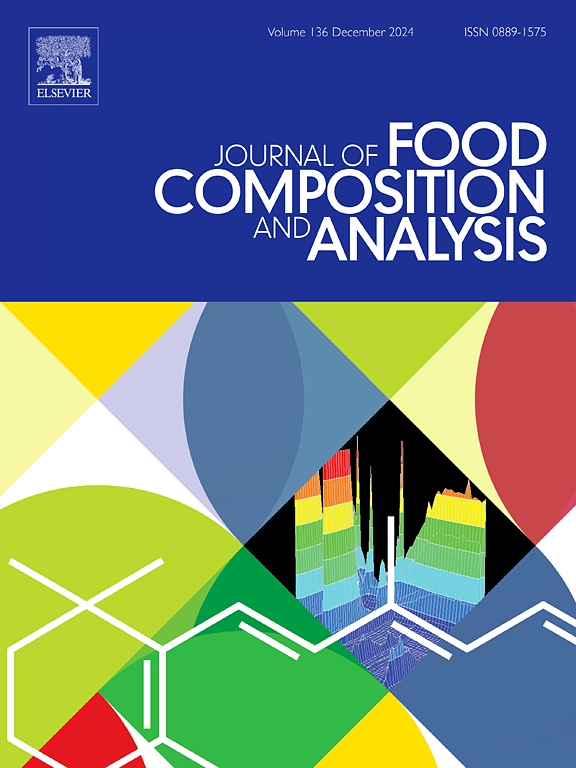Unveiling the key aroma-active volatiles influencing consumer preferences in typical oriental melon varieties by molecular sensory science methods
IF 4
2区 农林科学
Q2 CHEMISTRY, APPLIED
引用次数: 0
Abstract
Oriental melons, a group of Cucumis melo varieties produced in East Asia, demonstrate considerable genetic diversity in aroma. However, the disparities and complex interrelations between volatiles, sensory, and consumer preferences among varieties remain underexplored. This study systematically evaluates 18 homozygous parental line varieties, harvested in uniform conditions and with optimal maturity to isolate genetic influences. Sensory evaluation classified the varieties into 3 Groups, with fruity aromas showing positive correlations to consumer preference (r = 0.88, p < 0.001) and green aromas exhibiting inverse associations (r = -0.65, p < 0.01). 251 volatiles were identified by comprehensive two-dimensional gas chromatography-olfactometry-time of flight-mass spectrometry (GC×GC-O-TOF-MS), with 35 aroma-active compounds quantified by gas chromatography-mass spectrometry (GC-MS) and standards. Finally, 10 key aroma-active compounds were revealed through orthogonal partial least squares discriminant analysis (OPLS-DA) and odor activity value (OAV). Ethyl acetate (OAV = 5510.54) and octanal (OAV = 645.08) drove Group 3's fruity aroma and high preference, while cis-4-heptenal (OAV = 18,518.39) and cis-6-nonenal (OAV = 6123.92) were linked to Group 1's green aroma and low preference. This research lays a solid groundwork for the evaluation of oriental melon aroma and provides a dependable framework for aroma-focused breeding programs aimed at enhancing consumer satisfaction.
求助全文
约1分钟内获得全文
求助全文
来源期刊

Journal of Food Composition and Analysis
工程技术-食品科技
CiteScore
6.20
自引率
11.60%
发文量
601
审稿时长
53 days
期刊介绍:
The Journal of Food Composition and Analysis publishes manuscripts on scientific aspects of data on the chemical composition of human foods, with particular emphasis on actual data on composition of foods; analytical methods; studies on the manipulation, storage, distribution and use of food composition data; and studies on the statistics, use and distribution of such data and data systems. The Journal''s basis is nutrient composition, with increasing emphasis on bioactive non-nutrient and anti-nutrient components. Papers must provide sufficient description of the food samples, analytical methods, quality control procedures and statistical treatments of the data to permit the end users of the food composition data to evaluate the appropriateness of such data in their projects.
The Journal does not publish papers on: microbiological compounds; sensory quality; aromatics/volatiles in food and wine; essential oils; organoleptic characteristics of food; physical properties; or clinical papers and pharmacology-related papers.
 求助内容:
求助内容: 应助结果提醒方式:
应助结果提醒方式:


